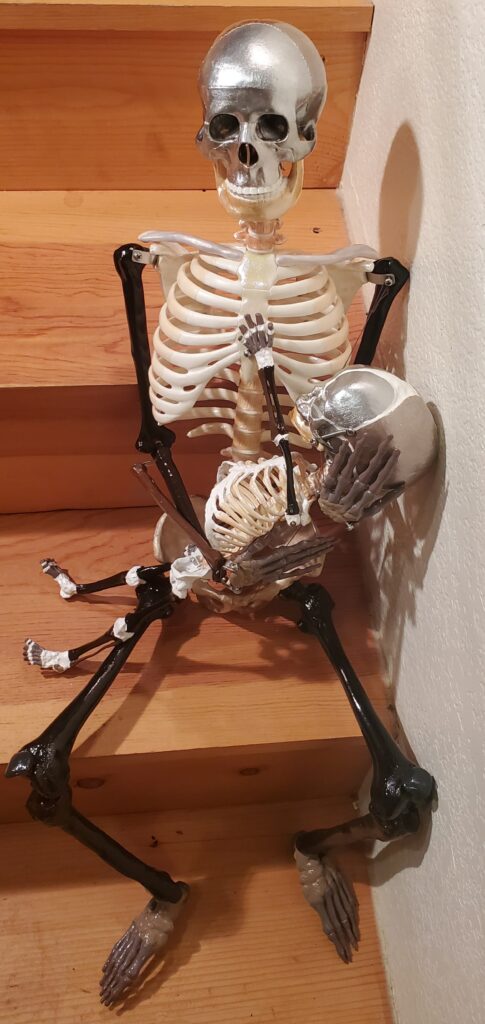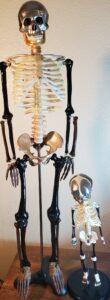Infants are frightfully fragile, miniature in mass, and demonstratively dependent. Their skeleton consists of an oversized skull, many starting nubs of bones, and a great deal of cartilage paired with undeveloped muscles which results in a body that provides little protection and meager mobility. I wanted to investigate their rare and fleeting framework as well as generate interest in others about this topic, so I painted detailed models. I feel it is important to share how to save a baby’s life during their most helpless year and explain why rescue interventions are modified to correlate with the drastic structural differences and brisk changes that occur in this brief period of development.






This is amazing! How many different paint colors were used to distinguish the adult versus infant bones and cartilage apart?
I used 32 different colors to distinguish the bones and then white to represent cartilage. The Axial portion, skull, spine, pelvis, and chest is shimmery and/or metallic as that’s where the magic happens. The Appendicular areas, arms, legs, hands, and feet are all solid colors because they are practical. The two skeletons match colors for all bones they have in common which was helpful when learning how the infant differed. Thank you for your interest.
Infants are fragile because there bones are not fully developed and most of the bones are still cartilage, meaning they have little protection and little mobility. An infants head can flex forward and block the air pathway. to clear the air way you can tilt the head back until it no longer rest on the chest. It is important that if an infant is not breathing to be able to C.P.R , because the skeleton is not fully formed you only need to press with two fingers to do the chest compressions or you can easily break the infants ribs and damage the lungs.